Minh Mang tomb is the perfect combination of natural landscapes and feudal architectural works which is considered as the most impressive royal tombs of Hue. Numerous gardens, lakes, bridges and terraces were set in the complex of 40 constructions of palaces, temples and pavilions in the national heritage. Furthermore, the architectural works in Minh Mang burial site bears not only the artistic merits but also the historical values. The imperial tomb of Minh Mang is one of the must – visit attractions in trip to explore the ancient Hue.
Location and History
Emperor Minh Mang ruled the southern and central of Vietnam in 20 years (1820 – 1840) as the 2nd king of the Nguyen Dynasty. He planned to construct his burial site by the elegant Perfume River, 12km southwest Hue’s city in Huong Tho district. The position was chosen according to the geomancy because it was said that the location of the emperor’s tomb could affect the fate of the dynasty. After the king’s death in 1841, the complex was continued to complete by Minh Mang’s son and also his successor – Thieu Tri Emperor.
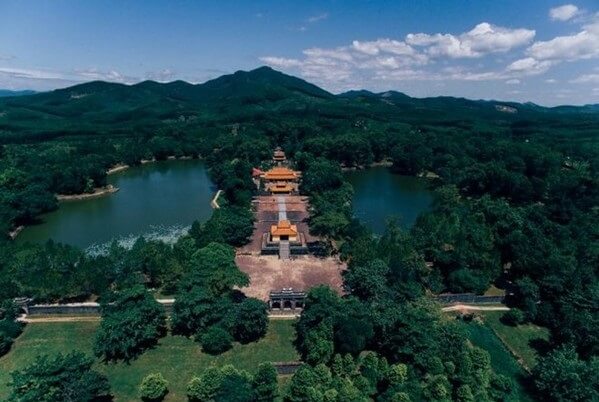
A panorama of Minh Mang tomb
Architecture
History wrote that Emperor Minh Mang was an expert in Confucianism therefore the architecture of the tomb was influenced by this Chinese concept. The funeral complex was enclosed by a wall with the total area of 18 hectares, surrounded by different constructions and natural landscapes. The site was constructed in the 3 parallel parts connected by the central axis – Than Dao. The design and placement of the monuments resemble to the Imperial citadel. Moreover, there are more than 600 inscripted poems in the monuments of this site making it the “19th century literature museum”.
From the main entrance – the Dai Hong Mon gate, walk about 500 meters, you will access the central courtyard. Then, the 3 stone staircases take you to the Stele pavilion. A bridge crossing the New moon lake will lead you to the Minh Mang’s sepulcher.
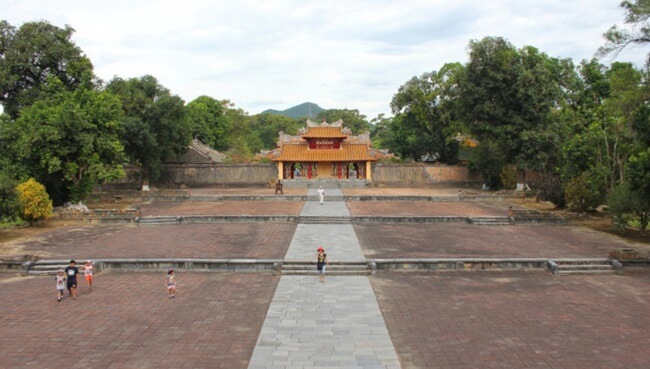
Than Dao - The central axis connects the monuments
Dai Hong Mon gate
This is the main entrance leading to Minh Mang tomb which is the typical construction of Nguyen dynasty. Dai Hong Mon gate has the height of 9 meters and the width of 12 meter containing 3 doors with the sophisticated decorations. The central gate was only open once to bring the Minh Mang’s coffin in the tomb and had never been used again. Thus, visitors have to go through the 2 side doors: Ta Hong Mon (Left gate) and Huu Hong Mon (Right gate).
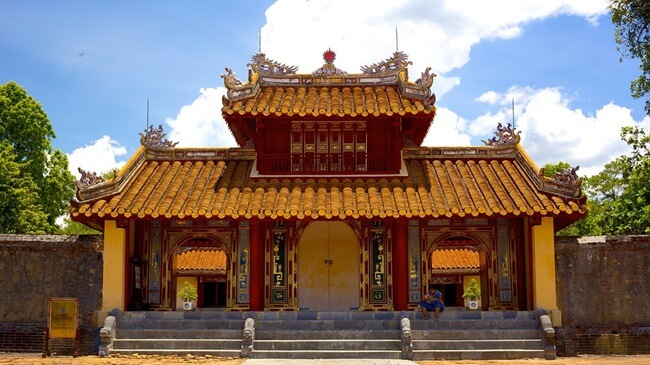
Dai Hong Mon gate - the entrance to the burial site
The Central Courtyard and the Stele Pavilion.
Lies behind the Dai Hong Mon gate is the central courtyard where 2 rows of stone statues craving in the figures of mandarins, houses and elephants stand in honor to the Emperor.
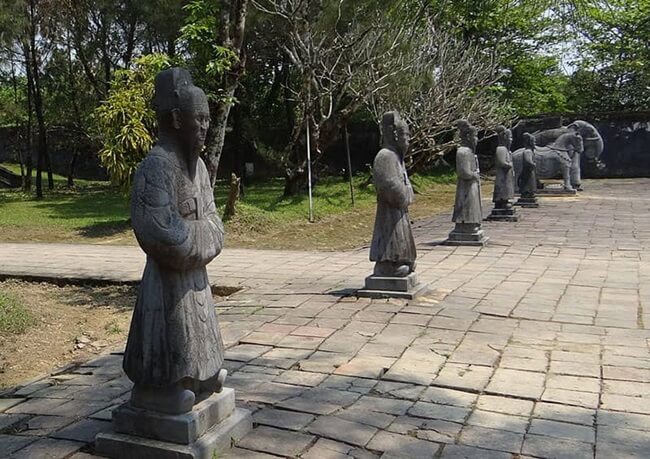
The stone statues in the central courtyard
Climbing 3 granite staircases to the square of the stele pavilion, you will stand in front of the Thanh Duc Than Cong stele inscribed the biography and merits of Minh Mang emperor by his successor – Thieu Tri.
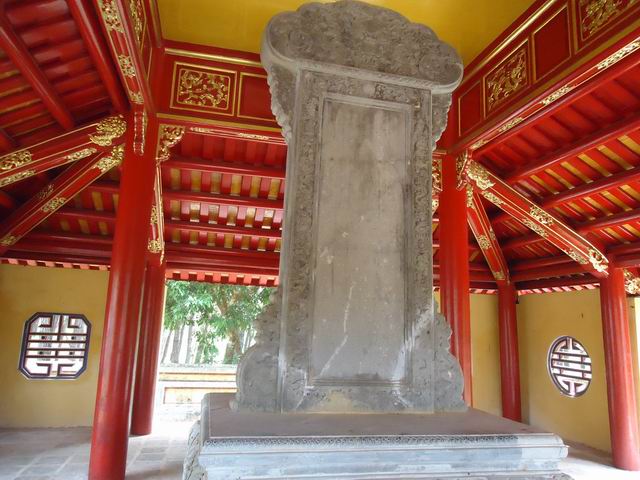
The stele inscripted the biography and merits of the emperor
The Temple's Area
After visiting the pavilion of stele, you will access to Hien Duc gate leading to the worship place of the emperor and his empress – Ta Thien Nhan. Sung An temple lies in the central of the site surrounded by 4 other constructions in the front and the back. Next, the Bright pavilion (Minh Lau) stands behind Hoang Trach Mon with 2 stories and 8 roofs. In the back are the 2 flower gardens carefully arranged after the character of longevity.
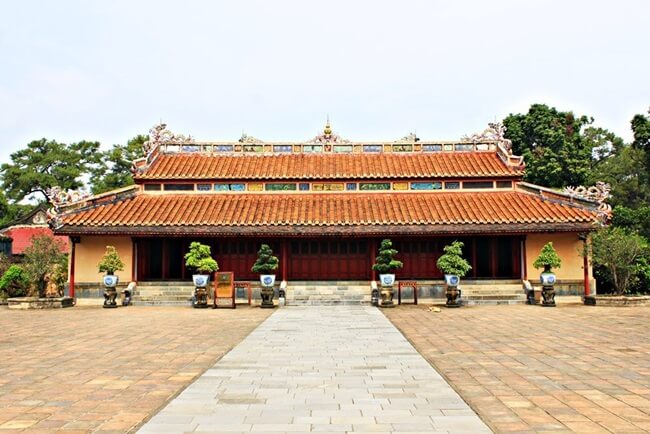
Sung An temple
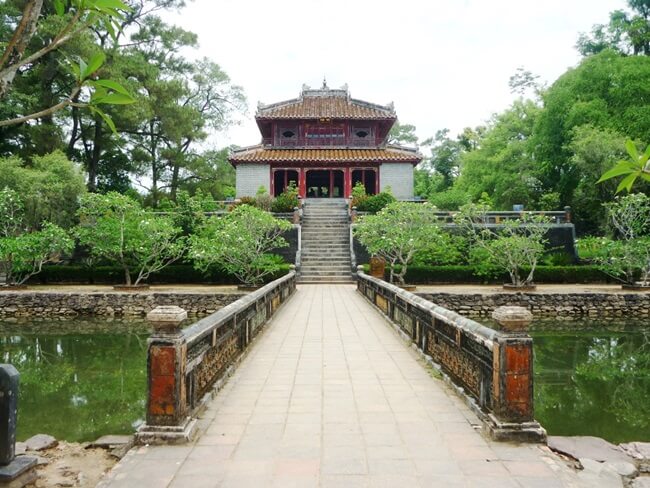
The bright pavilion (Minh lau)
The Tomb
The tomb area was surrounded by the crescent - shaped lake (Tan Nguyet). Crossing through the bridge of lake, visitors will find 33 stone staircases decorated with the dragon banisters, leading to the King’s sepulcher.
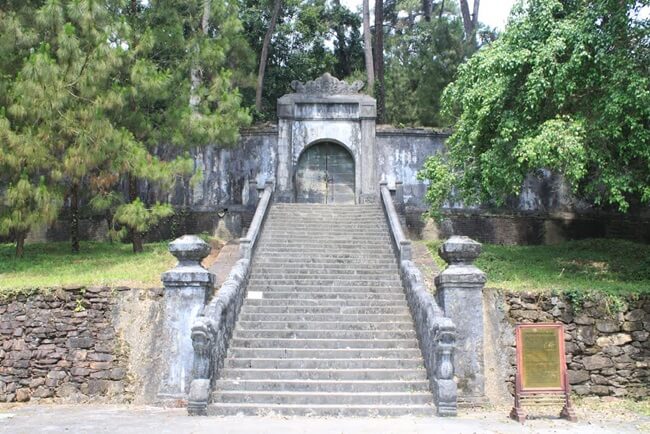
The stone staircase leads to the tomb of Minh Mang Emperor
Other information
• Getting there: You can go to the site by car or by boat. It takes about 40 minutes driving from the centre of Hue city and by boat is approximately 2 hours.
• Ticket: 80,000 VND (about 3,5 dollars)
• Opening hours: daily from 8:00 to 18:00.
♦ Consider one of
Hue tours to explore this mastepiece of the feudal architecture






